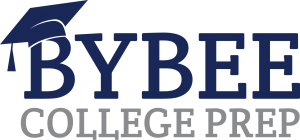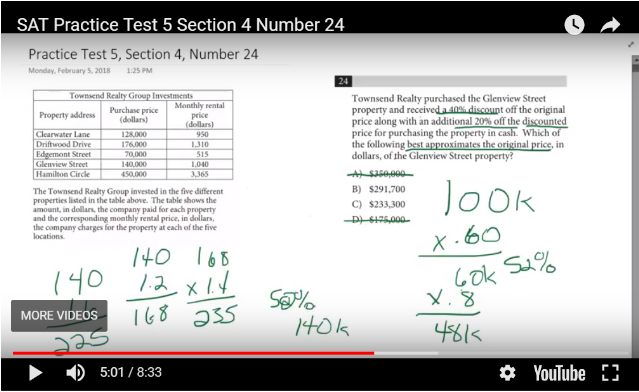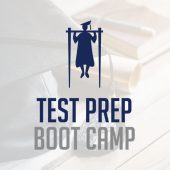What do you do when you get your PSAT scores back?
PSAT scores will start coming out on December 10th. What to do next depends on a number of different factors.
What grade are you in?
If you’re a junior, you’re going to use the scores very differently than if you’re a freshman or sophomore. For juniors, the PSAT is a fantastic way to look at exactly what you need to work on before your next test. Even if you took the SAT in November or December, this will be the first time that you’ve been able to look at the actual questions you missed . Now’s the time to look closely at the results and figure out what you’re going to need to work on for the March test. Was your Writing score a 27 with a 9 out of 15 on Standard Conventions of English? It’s time to beef up your knowledge of grammar rules. Did your 10 out of 15 on Problem Solving and Data Analysis hurt your math score? Great news: you can study those terms and practice with data to learn how to solve those problems.
Freshmen and sophomores have more time, but they need to realize that now is the right time to start preparing if they want to get those exceptional scores. Everyone getting a PSAT score back next week should go to Khan Academy and set up their prep plan. You can import your PSAT scores, and the program will provide an assessment that shows you exactly what areas you need to focus on most. Start working on the areas where you have the lowest skill levels to improve those areas.
You should also create a practice plan. Think about your schedule every day and figure out a 15-minute window where you know you’ll have time to work. You can use the Khan Academy program to create a practice schedule that will send you daily reminders to do some work. 15 minutes a day is about 10 questions. Pick two areas where you need to improve and do 5 questions on each of those or 10 questions on one.
What is a good score?
The PSAT serves 2 primary purposes. First, it offers you the chance to see what you need to work on to get the score you need when you take the actual SAT. Second, the PSAT is the gatekeeper test for National Merit recognition.
Most students will find the first purpose the more beneficial. Keep in mind that your test score is entirely relative to the school you want to go to. If your target college is a public university with a 70% acceptance rate, then 1200 is probably a great score. It gets you into the school without having to worry about taking “developmental” classes. If your target university is a selective school with less than a 20% acceptance rate and 25th percentile scores around 1400, then the PSAT will tell you how much work you need to do.
A much smaller percentage will be using the scores to determine what they need to do for National Merit. The National Merit Scholarship Corporation offers primarily two levels of recognition: Commended and Semifinalist. Commended is the top 3% of all test takers nationally. About 1.6 million students took the PSAT in 2017, so it’s about 32,000 students nationwide. Semifinalist is an even smaller portion. Roughly the top 1% of test takers in each state will be recognized as semi-finalists with the opportunity to qualify as finalists and be considered for an eventual scholarship.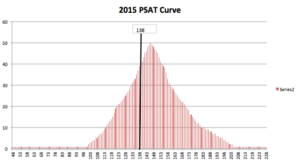
National Merit has its own score relative to the PSAT. It’s a 3-digit score referred to as the NMSI (National Merit Selection Index). It will be on a separate page of your PSAT score report. Technically, the PSAT score is 50% Math, 25% Reading, and 25% Writing. The NMSI balances these three scores into 1/3 each.
The Commended cutoff for the class of 2019 was 212. That translates to a minimum composite score of 1410 with a 710 in Reading & Writing and 700 in Math. (It’s entirely possible for 2 students to have a 1410 and one student be Commended and the other not. It’s also possible for a student with a 1400 to get Commended while a student with a 1420 doesn’t. That’s a topic for another post.) Semifinalist cutoffs vary by state with scores ranging from 223 (CA, MA, NJ, and others) to 212 (WY, ND, and others). With a maximum score of 228, the margin for error for National Merit students comes down to about a half dozen questions spread out over the 3 sections.
What should you do next?
If you’re a sophomore and your NMSI is around a 190 or so, it might be time to think about the prep you could do to qualify for National Merit Commended. Commended does not come with any sort of scholarship award itself, but it’s an exceptional accomplishment that comes with a great deal of recognition. If you’re within 20 points of your state’s Semifinalist cutoff, preparing for the PSAT your junior year could have some significant rewards.
If your scores are not in that range, it’s time to figure out the scores you’re going to need. You need to start creating a list of 7-10 schools you want to apply to based on whatever criteria is right for you. Do they have the academics you’re looking for? Is the campus culture what you want? For sophomores and younger, this doesn’t have to be set in stone. You just need to have an idea of schools to research.
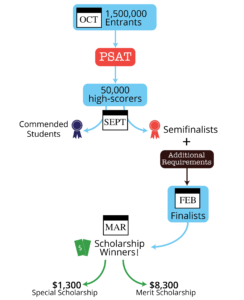
Use a source like College Navigator to find out the scores those schools look for and compare them to your PSAT score to get an idea of how much work you’re going to need to do. Keep in mind your SAT is about a year away and you’re going to be doing lots of things in school to help you learn what you need. You also have Khan Academy to use to help you target specific concepts.
If you’re a junior, it’s time to figure out exactly what you need to work on and start preparing for the March SAT. That’s a huge test date for juniors. You need to move practicing for the SAT to a higher spot on your priority list and commit some time to work on that every day. If you haven’t taken a prep program, consider it. Always consider the ROI of your prep, though. It might not make sense to spend $2000 on a prep program when you can get what you need from a $500 online program.
You can use our test prep planning app to generate a test prep plan that’s right for you or schedule a consultation with me. Consultations can be onsite or online and are COMPLETELY FREE! They take 30-45 minutes, and we’ll craft a test prep plan that works for you. I love helping students create a path to achieve their goals.
